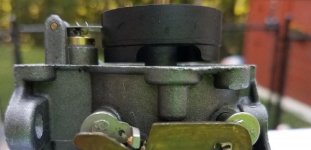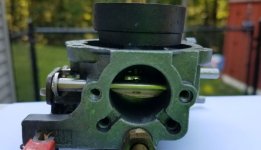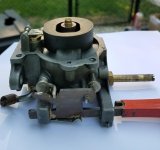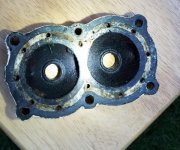I rebuilt my 1960 JW-16 3hp Johnson carburetor and everything appears to be clean and components all correctly set.
I have to pull the choke out to start it and even then it only runs for a few seconds and then the carb floods with fuel.
Fuel runs out the choke side bore behind the air silencer. I have to assume there is something amiss with the float setting
but I just don't see anything incorrect with how I set it up. Parallel with the body and the needle appears the seat.
Is there any suggestions on what else I should check?
I have to pull the choke out to start it and even then it only runs for a few seconds and then the carb floods with fuel.
Fuel runs out the choke side bore behind the air silencer. I have to assume there is something amiss with the float setting
but I just don't see anything incorrect with how I set it up. Parallel with the body and the needle appears the seat.
Is there any suggestions on what else I should check?





